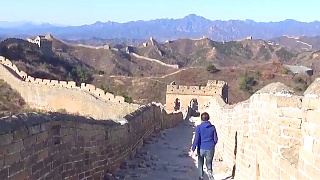Plus a little of the canola fields of the HongHe HaNi Autonomous Prefecture in southern YunNan ...

Live more ...
 The beautiful YuanYang Õģāķś│ rice terraces in YunNan province
The beautiful YuanYang Õģāķś│ rice terraces in YunNan province

|
The picturesque JinShanLing to SiMaTai section, north east of Beijing ...
|

|
With Cyrus Janssen ...
With Lee Camp ...
|

|
Including the famous NanJing Lu ...
|

|
With DianXi XiaoGe ...
Bonus film - wasabi ...
Bonus film - cherries ...
Bonus film - taro flowers ...
|

|
An extended chill-out instrumental piece with elements of jazz, classical and prog-rock. Written by Uwe M├╝ller.
A very talented teen musician ...
|

|
With Walk East ...
|

|

|
With Gabor Mate ...
|

|